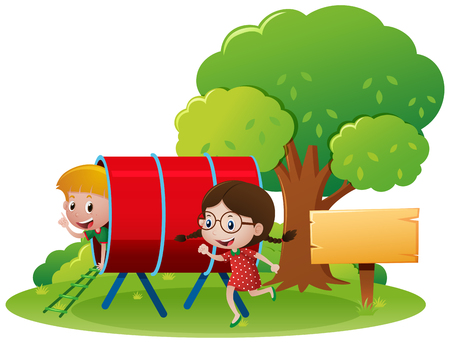Understanding the UK Campsite Environment
Camping in the UK offers a unique experience, shaped by its diverse landscapes and ever-changing weather. Typical campsites can be found nestled within ancient forests, spread across rolling fields, or perched along rugged coastal areas. Each of these settings brings its own set of characteristics and challenges that parents and guardians need to be mindful of when looking after children. Forested sites often feature uneven ground, dense undergrowth, and the presence of wildlife such as badgers or foxes. Open fields may seem safer at first glance, but hidden holes, nettles, and even livestock can pose risks for curious youngsters. Coastal campsites add another layer of complexity, with cliffs, rock pools, and rapidly changing tides creating potential hazards that require constant vigilance. The British weather also plays a significant role; sudden rain showers can turn trails slippery and increase the risk of hypothermia, while strong winds may cause branches to fall or tents to collapse. Understanding these environmental factors is the first step towards keeping children safe during a camping adventure in the UK.
Common Physical Hazards and How to Spot Them
British campsites offer wonderful opportunities for children to explore the outdoors, but they also present several physical hazards that require careful attention. Recognising these risks early can help prevent accidents and ensure a safe camping experience. Below is an overview of the most common hazards found on UK campsites and practical tips for spotting them.
Typical Physical Hazards at UK Campsites
| Hazard | Description | How to Spot |
|---|---|---|
| Uneven Ground | Patches of ground with dips, holes, or tree roots that can cause trips and falls. | Look for areas where grass grows unevenly, visible tree roots, or patches that feel soft or unstable underfoot. |
| Low Branches | Branches hanging at head height, especially around pitches and communal areas. | Scan overhead when walking or setting up tents, especially near trees bordering paths or play areas. |
| Water Bodies | Ponds, streams, lakes or even small ditches that pose drowning risks. | Identify all visible water features on arrival; pay special attention after rain as hidden puddles and muddy banks may appear. |
| Fire Pits & Barbecues | Designated fire pits or portable BBQs used by campers that remain hot long after use. | Note communal fire areas and check for signs of recently extinguished fires such as ash or warm stones. Keep an eye out for private BBQs close to tents. |
Practical Tips for Parents and Carers
- Do a hazard walkaround with your child when you arrive. Make it a game to spot potential dangers together.
- Establish clear boundaries so children know where they can safely explore.
- If camping in wet weather, reassess the ground regularly as surfaces can change rapidly.
- Remind children to avoid running near fire pits, water bodies, and in wooded areas with low branches.
The Importance of Vigilance
No campsite is completely free from risk, but being proactive in identifying these common physical hazards can make a significant difference. By familiarising yourself and your children with the surroundings, you set the stage for a fun and accident-free camping holiday in the UK.
![]()
3. Dealing with Wildlife and Insects
When camping in the UK, it’s quite common to encounter a variety of wildlife and insects. Recognising the animals you might come across—such as foxes, badgers, and different types of insects—can help you keep children safe while enjoying the outdoors.
Recognising Common Wildlife
Foxes and badgers are typical visitors to many campsites, especially those close to woodlands or fields. While they generally avoid humans, these animals can be attracted by food scraps left out at night. Teaching kids not to approach or feed wild animals is essential for their safety and the wellbeing of the creatures themselves.
The Risks Presented by Wildlife
Although most encounters with UK wildlife are harmless, there are still some risks to consider. Foxes may carry diseases like mange or parasites that could affect pets, while badgers may become defensive if startled near their setts. It’s important for children to understand not to chase or corner any wild animal, no matter how friendly they may seem.
Managing Insect Hazards
Insects such as midges, wasps, bees, and ticks are also common around campsites. Midges can cause itchy bites, while wasps and bees may sting if disturbed—especially during late summer. Ticks, found in grassy or wooded areas, can occasionally carry Lyme disease. Teach children to wear long sleeves and trousers when playing in tall grass, check themselves for ticks after outdoor activities, and avoid disturbing insect nests or hives.
By helping kids recognise common wildlife and insects—and understanding the potential risks—they can enjoy their camping experience safely and respectfully within the UK’s natural environment.
4. Weather Considerations and Preparedness
British weather is notoriously unpredictable, making it essential for families to be well-prepared when camping with children. From sudden downpours and chilly evenings to unexpected bursts of sunshine, each weather condition brings its own set of hazards. Understanding how these changes can affect kids—and taking steps to mitigate risks—will help ensure a safer camping experience.
Navigating British Weather: Key Hazards for Kids
Children are particularly vulnerable to shifts in weather due to their developing bodies and varying tolerance levels. Below is a table outlining common UK weather scenarios and the associated risks for young campers:
| Weather Condition | Potential Risks for Children | Precautionary Measures |
|---|---|---|
| Heavy Rain | Hypothermia, slipping on mud, wet clothing leading to chills | Packed waterproofs, quick-change dry clothes, sturdy footwear |
| Cold Snaps/Night-time Drop | Difficulty sleeping, hypothermia, discomfort, reluctance to hydrate | Layered clothing, thermal sleeping bags, hot water bottles (with supervision) |
| Sunny Spells/Heatwaves | Sunburn, dehydration, heat exhaustion, insect bites | High-factor suncream, hats, regular water breaks, shaded rest areas |
Practical Tips for Families
- Packing Wisely: Always include extra layers, rain gear and hats even if the forecast looks promising.
- Monitor Weather Updates: Use reliable local weather apps or campsite noticeboards to stay informed about changing conditions.
- Teach Awareness: Encourage children to recognise signs of cold, heat or discomfort and speak up early.
- Shelter Setup: Pitch tents in elevated areas away from potential flooding and wind exposure.
- Sunscreen Routine: Apply suncream before activities and reapply regularly, especially after swimming or sweating.
The Importance of Vigilance and Flexibility
No matter how well you plan, British weather can still surprise you. Stay flexible with your activities—have indoor games or crafts ready for rainy spells and encourage slower-paced exploration during heat. By keeping a close eye on both the sky and your children’s comfort levels, families can enjoy UK campsites safely in all seasons.
5. Safe Use of Camping Equipment
When camping with children in the UK, ensuring their safe interaction with essential camping equipment is paramount. Tents, stoves, torches, and other common gear all pose potential hazards if not used correctly. Below are some straightforward guidelines to help keep young campers safe while still allowing them to enjoy hands-on experiences.
Tents: Setting Up and Moving Around Safely
Children should always be supervised when setting up or taking down tents. Pegs, guy lines, and poles can trip the unwary—make sure these are clearly marked or flagged, especially in low light. Teach children to avoid running near tents to prevent accidents, and ensure all zips are closed at night to stop insects or small wildlife from entering.
Stoves and Cooking Gear
In the UK, portable gas stoves or camping cookers are popular but require careful handling. Children must only use these under adult supervision. Set up cooking areas well away from tents and flammable materials, and establish a clear “no-go” zone for younger children. Remind everyone about the risk of hot surfaces even after cooking has finished. All fuels should be stored securely out of reach.
Torches and Lanterns
Torches are essential for navigating campsites after dark but come with their own set of risks. Show children how to use torches responsibly—avoid shining lights into people’s eyes and check batteries regularly to prevent sudden blackouts. For lanterns, especially those with naked flames or heated elements, only adults should handle lighting and extinguishing duties.
Other Camping Gear: Knives, Tools, and Chairs
Utility knives or multi-tools should be reserved for older children who have received proper safety instruction and are supervised closely. Foldable chairs and tables can pinch fingers—demonstrate safe ways to open and close these items. Always store sharp or heavy objects out of reach when not in use.
Encouraging Responsible Behaviour
Fostering a culture of responsibility is crucial on UK campsites. Encourage children to ask before touching unfamiliar equipment and praise them for following safety rules. A simple routine of checking gear together at the start and end of each day reinforces safe habits that will serve them well in future adventures.
6. Practical Tips for Supervision and Group Safety
Ensuring the safety of children on UK campsites requires a blend of vigilance, practical routines, and an understanding of local environments. Here are some best practices tailored to British camping culture:
Establish Clear Boundaries
Begin by physically walking the campsite with your group and highlighting safe zones, potential hazards (like rivers, nettle patches, or steep banks), and areas that are off-limits. Use recognisable landmarks—such as “no going past the old oak tree” or “stay within sight of the picnic benches”—to make boundaries tangible for children.
Maintain Consistent Headcounts
Regular headcounts are essential, especially when transitioning between activities or after meal times. Allocate responsibility among adults for smaller groups (“buddy system” or “patrol leaders”) to keep numbers manageable and accountability clear.
Supervision Ratios and Adult Roles
Follow recommended supervision ratios; in the UK, it’s common to see at least one adult for every six to eight younger children, or fewer for those under 8 years old. Assign roles such as first-aider, fire marshal, or lookout so that each adult knows their specific duties throughout the day.
Communication Protocols
Agree on simple signals—like a whistle blast or a bell—for gathering the group quickly if needed. Mobile phone coverage can be patchy in rural Britain, so always know the location of the nearest landline or warden’s hut for emergencies.
Engage Children in Safety Practices
Make safety interactive: teach children about local wildlife (e.g., not touching adders or foxes), how to safely cross stiles and gates, and why keeping tents zipped is important. Involve them in setting up camp rules, which encourages ownership and better adherence.
Create an Inclusive, Watchful Atmosphere
Foster an environment where children feel comfortable reporting concerns—whether it’s a wasps’ nest spotted near the loo block or someone feeling unwell. Encourage older children to look out for younger ones, echoing the community spirit often found on British campsites.
By combining proactive supervision with clear communication and a dash of British practicality, you can create a safer, more enjoyable outdoor experience for all campers.


